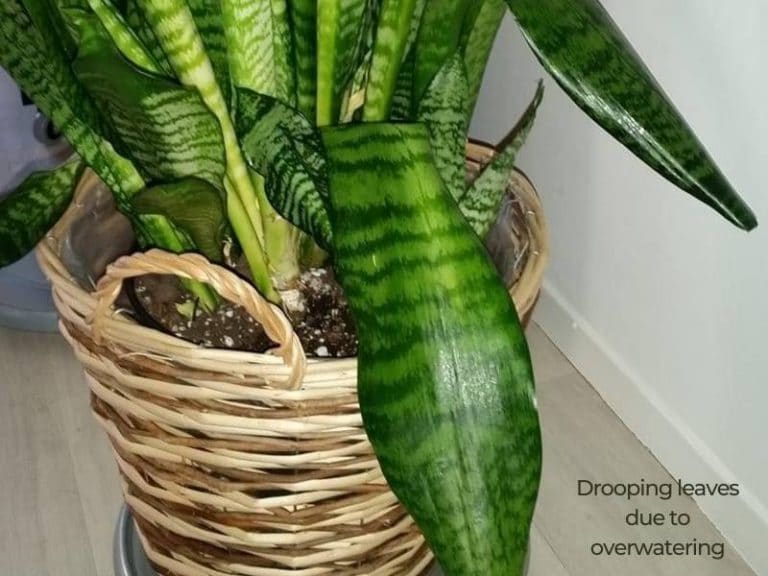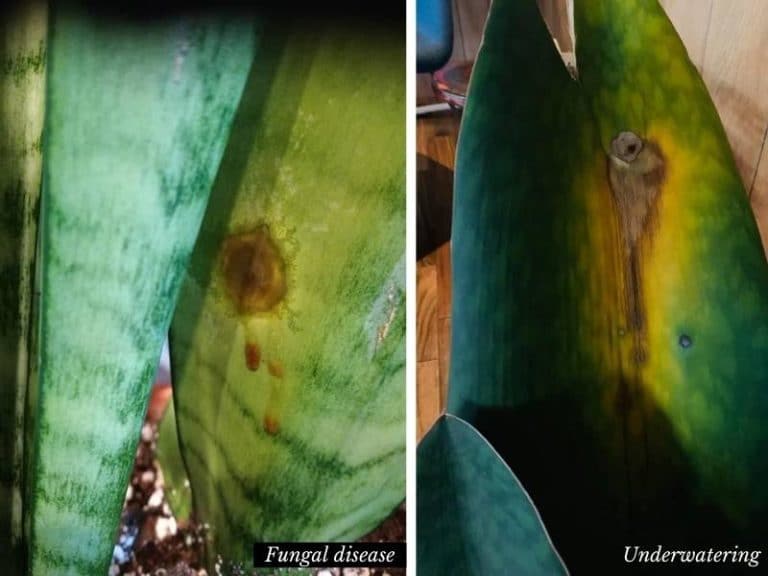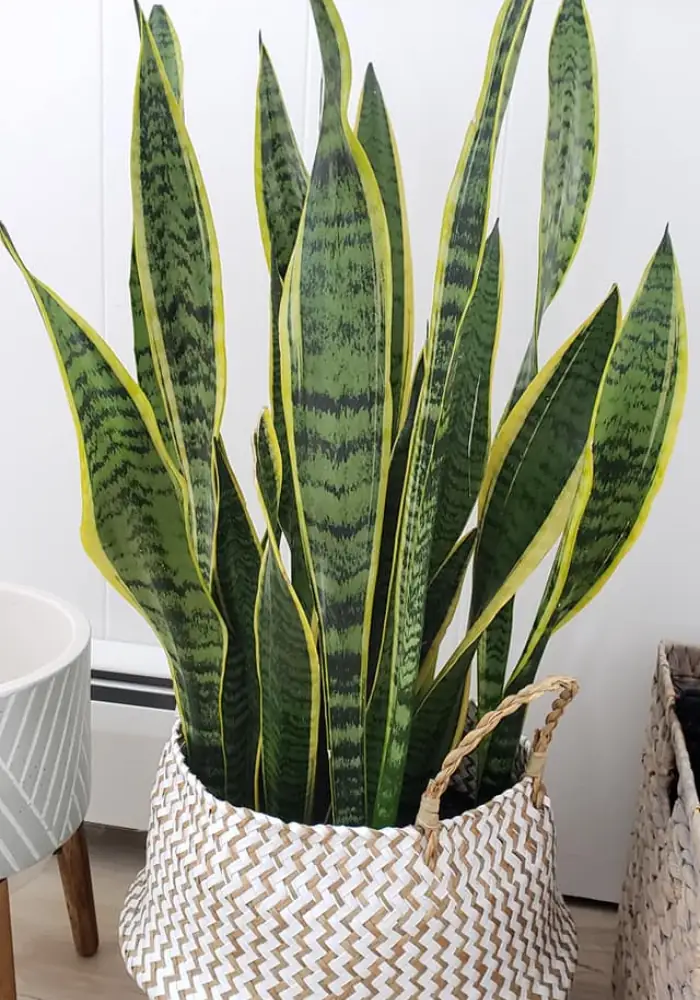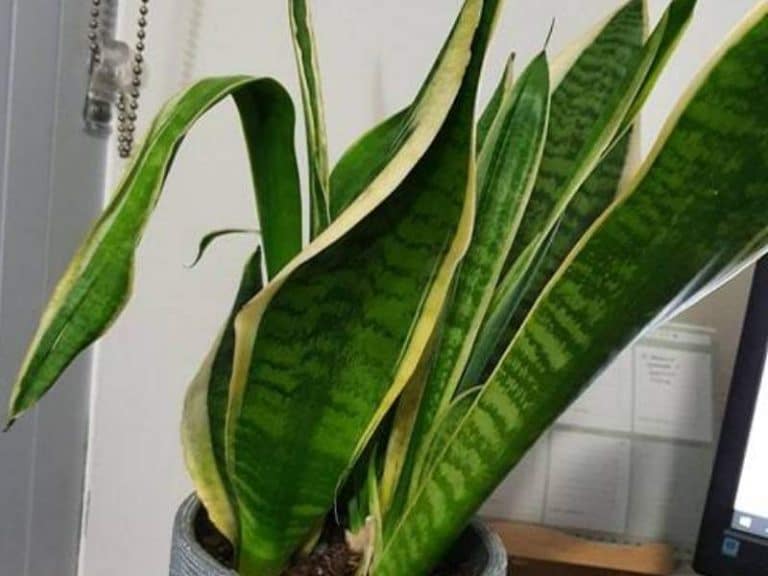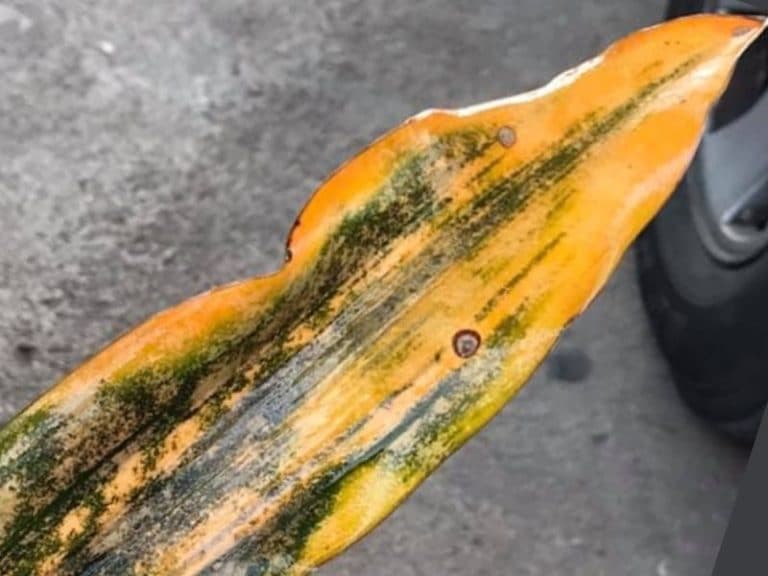7 Snake Plant Problems and Disadvantages
Sansevierias are great houseplants that remove toxins from the air, making your home free of airborne pollutants. Being hardy, snake plants are easy to grow, but that doesn’t mean there won’t be any issues. So, what are the problems with snake plants?
Common snake plant problems include overwatering, temperature sensitivity leaves falling over easily, root rot, slow growth, and propagation difficulty. In addition, sansevieria are toxic to cats and even children, making them dangerous and less desirable indoor plants.
Common snake plant problems
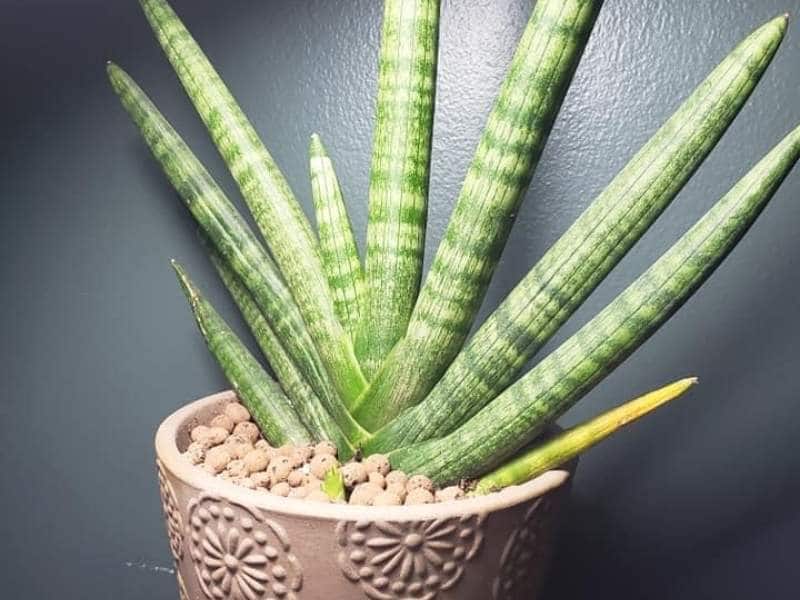
A common problem with snake plants is getting the moisture requirement right. The plant easily absorbs more water than it needs leading to ill health over time. Other common problems include stunted growth, poor quality culture, root rot, and leaf loss.
Here are some of the common snake plant problems:
1. Slow growth
The average height of snake plants is 1-4 feet tall, but you can occasionally find species that grow to more significant heights if grown under optimal conditions. The plant prefers a relative humidity of about 40%, meaning it can tolerate fluctuations of light and temperature quite well.
A significant disadvantage of snake plants is that they have minimal growth while growing indoors (and at certain times of the year). The size of the pot also forces the plant to restrict how far its roots spread and affects the formation of additional leaves. Cutting off the tips of the plant’s leaves affects how high the leaves can grow.
Growing the plant outdoors can help grow taller and larger varieties of the plant, but it also depends on the plant species. You can also take precautions not to damage the plant (especially its center) if you are looking to reduce slowed or stunted growth instances.
2. Propagation problems
Snake plants face several propagation problems. Some people prefer using water while others prefer cuttings. Propagating your plant using water is easy for most people, but there are increased chances of causing root rot because of overwatering.
Cuttings are also ideal for propagating snake plants, given that you know how to perform a good cut. You run the risk of injuring your plant when a cutting is incorrectly done.
3. Root rot (fungal) problems
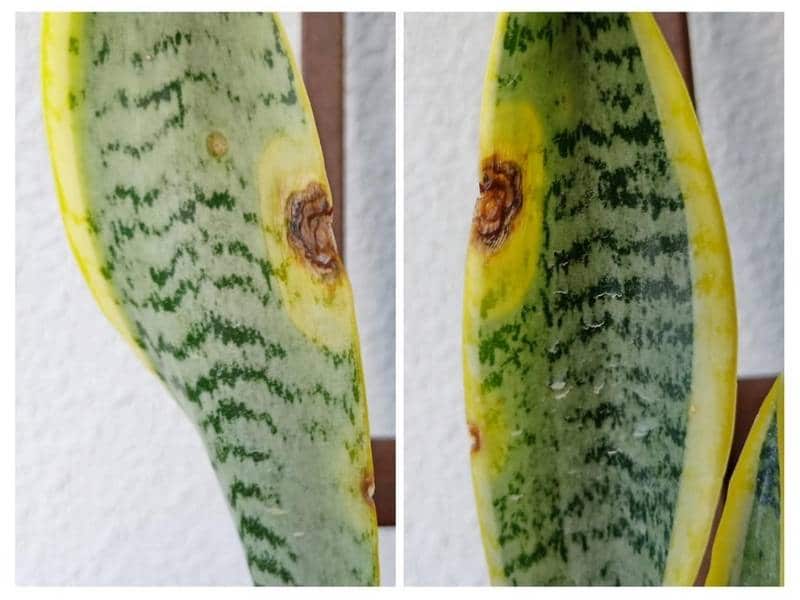
Snake plants are prone to root rot and fungal infections. Most of the cases of root rot and yellowing of the leaves are related to overwatering. Snake plants don’t need much water, and you should water them with minimal amounts about twice a month.
You can tell if your plant is suffering from a root rot situation by checking for the following signs:
- Smelly potting soil– If you notice that your plant roots or potting medium produce a foul smell, it could be that your plant is suffering from root rot. You can quickly tell by scooping some of the soil close to the base of the plant (taking care not to damage the plant’s roots) and placing it close to your nose. A smelly potting medium is dangerous to your plant and might demand immediate attention.
- Mushy roots– Healthy snake plants have crusty white rhizomes that are easily noticeable after digging a few inches beneath the soil. Suppose you suspect that your plant has a fungal infection. It’s advisable to check the roots. A standard indicator of root rot among snake plants is mushy, brown, or flaky roots. You should feel the roots, observing their texture and outward appearance.
- Yellow or brown leaves – Healthy snake plant leaves are green, with some varieties having additional variegation on the edges. Yellow or brown leaves on your snake plant might be an indicator of several conditions, including overwatering, pests, and root rot. Scrutinize your plant to get to the root cause of the issue before taking the appropriate steps.
4. Overwatering problems
Overwatering in snake plants is a common problem as the plant is very sensitive to the moisture content in the soil. These plants are easily overwatered because the signs of waterlogging can be quite similar to those of underwatering in snake plants, which is very confusing.
During the winter months, the plant enters its dormant phase, where it requires minimal water. You can stay up to a month without having to water your plant. Overwatering your snake plant can cause many problems to the plant, including root rot, droopy leaves, stunted growth, etc.
The general rule is to water the sansevieria minimally, allowing the top inch of the soil to dry in between waterings. However, that will depend on the season and the type of potting mix.
Suppose you’re still unsure how best to water tour snake plant, it’s recommended to confirm with a botanical expert near you.
5. Temperature sensitivity
Snake plants are hardy plants that grow well in varying climates. Although these plants can withstand harsh conditions, they are susceptible to sudden temperature and light changes.
Snake plants prefer temperature ranges between 55-85 °F. Excessively high temperatures might cause brown rings to appear on leaf surfaces and push the plant to a state of trauma. Wrinkled leaves on sansevieria could also indicate extreme heat.
The plants also prefer dim indirect sunlight and do quite well in the dark, brightly lit spaces. They adjust well to artificial lighting and are an excellent plant to grow indoors.
6. Leaves falling over
Snake plant leaves are long green pointy leaves that stand out from the rest of the plant. Sometimes these leaves may droop, turn white or fall over. These are signs of ill health on your snake plants, and you must take immediate action to identify what could be causing such an occurrence.
Snake leaves may fall over for several reasons, including:
- Too much water – Overwatering remains a significant problem for snake plants. The plant stores water in its leaves, and when the plant takes in too much water, the leaves may become heavy and droop.
- Light problems – Snake plants can accommodate low light intensities for considerable periods. However, when placed in a dark room for a long time, the leaves might begin to fall over. The plants do well in low and medium natural light intensities but can also survive well under artificial lighting conditions such as fluorescent and incandescent lights.
- Potting issues– Poor potting material can cause a snake plant’s leaves to fall over. Pot-sizes can also determine how healthy your plant becomes. Huge pots might cause the breeding of fungi, root rot and are prone to overwatering. Small vessels can cause root-bound (where the plant’s roots become bound together, affecting nutrient and water intake).
7. Curling leaves
A healthy snake plant has straight sword-shaped leaves. Curled snake plant leaves indicate ill health, negligence, pest attacks, or overwatering. Identifying what is causing your plant’s leaves to curl is key to dealing with the issue.
Shrimps are a common pest infestation that might cause your plant’s leaves to curl and leave black spots on the leaves after feeding. You can use a magnifying glass to check for such sites on your plant.
Keep the leaves if they seem healthy, but you can also cut and discard the dead or excessively damaged ones. It’s also advisable to occasionally wipe the leaves using a cotton band to remove pests and keep the leaves looking clean and shiny.
Other Disadvantages of Snake Plants
Snake plants have other disadvantages that relate to their toxicity. The plant leaves are mildly poisonous to cats, dogs, and other pets within your household. A snake plant’s leaves are bitter and highly indigestible.
Other disadvantages of snake plants include:
Snake plants are toxic to cats
Snake plants are toxic to cats and other pets. The plant’s bitter leaves prevent pets from ingesting too much of the plant, which keeps the toxicity at mild levels. Common symptoms of snake plant poisoning among cats include appetite loss, drooling, gastrointestinal issues, nausea, diarrhea, and vomiting.
If you happen to notice similar symptoms on your pet (and have a snake plant located nearby), it’s most probable that your cat could’ve ingested the leaves.
Sanseveria are toxic to humans
Snake plants are also toxic to humans, especially children who may not be aware of the harmful effects of the plant. A child might accidentally ingest the leaves (but given the bitter taste, it’s unlikely they will take in more than two bites) and consequently suffer from snake plant poisoning.
The symptoms of snake plant poisoning among humans include gastrointestinal problems, nausea, vomiting, irritation of the mouth and nose, etc. Most cases usually fade over time, but it’s always best to consult a medical expert if the issue is more severe.


